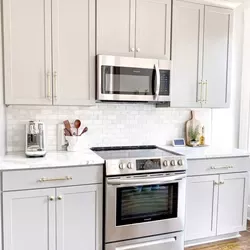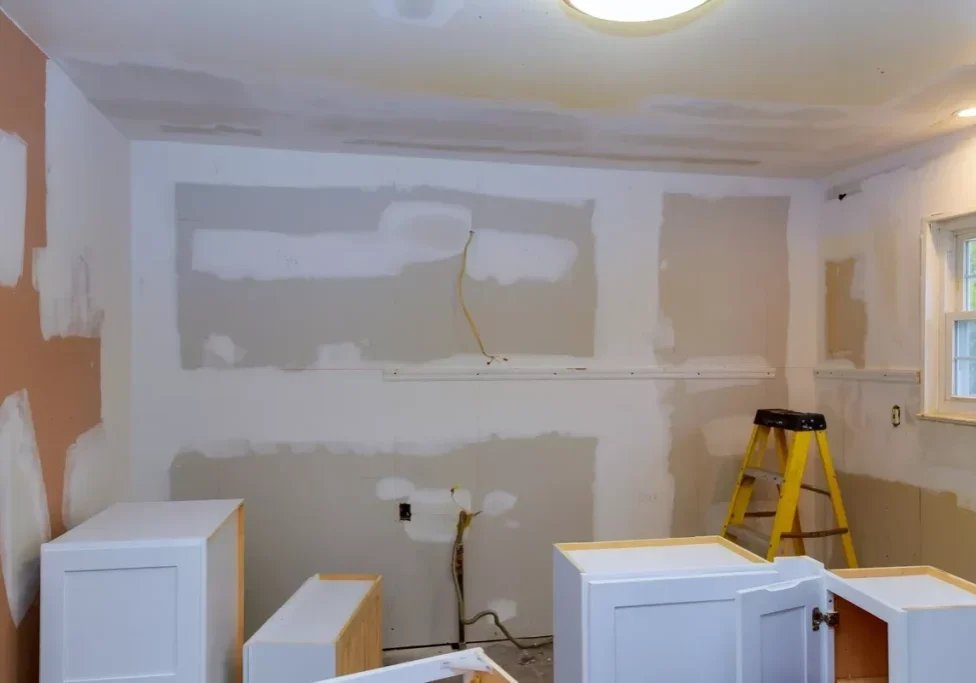Should You Fix Peeling Surfaces on Thermofoil Cabinets?

Whether you should fix peeling surfaces on thermofoil cabinets depends on the extent of the damage. In short, minor thermofoil peeling may be worth repairing, but extensive damage won’t be.
In this article, we’ll go over:
Need to repair your thermofoil cabinets?
Contact us online below or call (480) 641-9611. One of our cabinet experts will come to your home for a same-day, no-obligation quote refinish or reface your thermofoil cabinets.
What is Thermofoil?
Thermofoil is a PVC vinyl laminate that is essentially melted onto the cabinet base material—usually engineered wood like medium-density fiberboard (MDF)—using vacuum pressure and heat. Thermofoil has become a popular choice for pre-fabricated cabinets because it’s affordable and easy to apply to cabinets in mass.
Now that you know what thermofoil is, we’ll explain what can make it peel.
Why Thermofoil Peels
Most laminates and veneers start to delaminate, which is when the finish separates from the base material, after a few years of installation. Thermofoil is thinner than wood veneers and other plastic laminates, so it’s not as durable and tends to start peeling faster.
Delamination can happen more quickly when:
- The thermofoil cabinets are in frequent contact with water. Over time, water seeps beneath the thermofoil finish and causes the base material to swell and warp, resulting in the finish peeling or bubbling. Cabinets that sit beneath a sink or showers or in spots that get a lot of moisture will start peeling faster than those in dryer locations.
- The cabinets get a lot of traffic. Frequent touching from opening and closing cabinets wears down the thermofoil finish, which can cause weak spots that start peeling from the base material. Slamming cabinet doors and drawer fronts against their boxes can also expedite thermofoil delamination because the repeated force weakens the bond. Self-closing hinges and drawer tracks can help prevent thermofoil from peeling prematurely.
- The cabinets sit above heat-generating appliances. Like water, frequent contact with heat can cause thermofoil to bubble and peel. Cabinets above or close to coffee makers, toaster ovens, and stovetops tend to delaminate faster than those that aren’t. Hair styling appliances (curling irons, blow dryers, etc.) can also cause thermofoil to delaminate.
Now, we’ll go over how to repair thermofoil finish damage.
Repairing Thermofoil Cabinet Damage
To repair peeling thermofoil, you can:
- Patch the peeling spots. As long as the base cabinet material is in good condition, you can try regluing the peeling thermofoil to the base. Remember that regluing won’t be an excellent long-term fix but will temporarily keep the peeling thermofoil attached until you decide to invest in a longer-term solution.
- Refinish your cabinets. Cabinet refinishing involves stripping the thermofoil from your cabinet boxes, doors, drawer fronts and refinishing the cabinet with the finish of your choice. Cabinet refinishings are a good choice if you just want a new finish for your existing cabinets.
- Reface your cabinets. Cabinet refacing involves everything in a refinishing, except you also get brand new doors and drawer fronts. A refacing is a good choice if you want a new finish and a different style of cabinets. Plus, at Cabinet Coatings, we give you solid wood cabinet panels to help your refacing last much longer.
If the thermofoil is peeling too much or your cabinets aren’t in good shape, you’re likely better off replacing instead of repairing the cabinets.
When to Replace Thermofoil Cabinets
You should replace instead of repair your thermofoil cabinets when they:
- Have extensive damage in several places. If a good portion of your cabinets’ finish is peeling, more places will likely start peeling soon. You can repair the finish by replacing it with a refinishing or refacing, but getting new cabinets may be a better investment depending on their age and condition.
- Are 15+ years old. Most cabinets only last 15–20 years before the boxes start falling apart. If your cabinets are approaching the 15-year mark, paying to repair the cabinets won’t be worth the cost in the long run since you’ll probably have to replace them soon.
- Cabinets are warped or have structural damage. Once the cabinet base material starts warping or developing structural damage, it usually means replacing your cabinets. It won’t be worth repairing them since the cabinets will continue warping, and the thermofoil will start peeling again.
- Have a foul odor that won’t go away. Over time, the cabinet base material absorbs various smells from your kitchen or bathroom—even faster when the peeling finish can’t protect the absorptive base material.
You can learn more about when you should replace cabinets in our blog.
Want to Fix Your Thermofoil Cabinets? Call Cabinet Coatings Today.
Schedule an appointment online below or call us at (480) 641-9611. We’ve been working on thermofoil cabinets in the greater Phoenix area for the past 30 years. Our finishing pros will talk with you about what you’re looking to fix, then give you a free in-home or virtual consultation that same day. We’ll help you make your peeling thermofoil cabinets look brand new again.
Recent Posts

Laundry Room
A Laundry Room Makeover Has Never Been Easier Laundry Room Cabinet Refacing throughout Arizona Do you have big remodeling plans…

Kitchen
Enjoy the Kitchen Cabinets of Your Dreams for a Price You’ll Love Kitchen Cabinet Refacing throughout Arizona Experience a transformation…

Bathroom
Update Your Bathroom Cabinetry for a Fraction of the Cost of Buying New Bathroom Cabinet Refacing throughout Arizona Breathe new…

Cabinet Remodeling
A New Look Designed for Your Space. Cabinet Refacing & Refinishing throughout Arizona Cabinet Coatings has been one of the…









